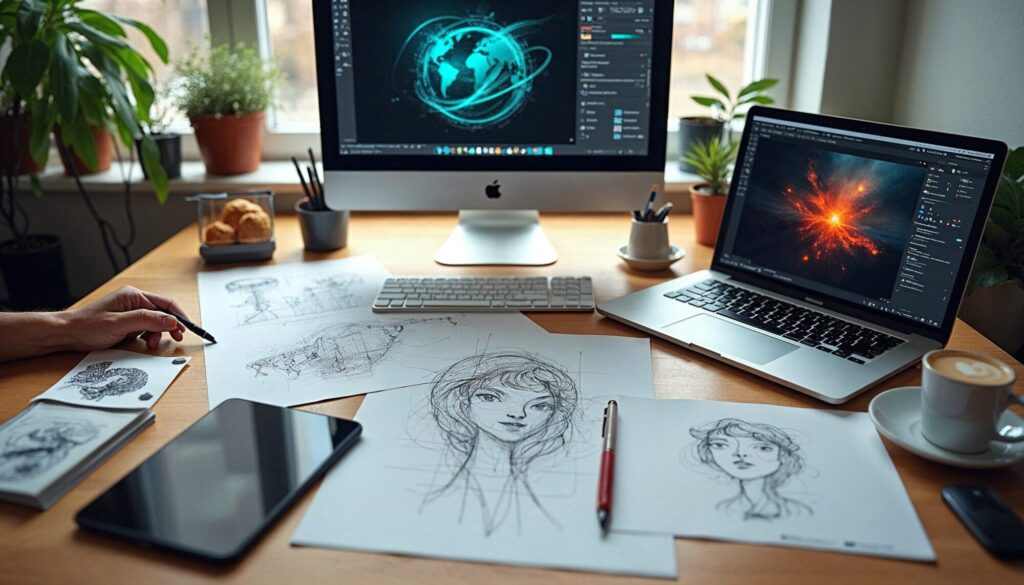AI New Era in Graphic Design. The graphic design landscape is undergoing a transformative shift as designers increasingly blend traditional analog techniques with cutting-edge artificial intelligence (AI) technologies. This fusion is redefining creative processes, allowing for innovative expressions that resonate with contemporary audiences.

Embracing the Analog Revival
In recent years, there’s been a resurgence of interest in analog methods such as hand-drawn illustrations, printmaking, and collage. These tactile techniques offer a counterbalance to the digital world’s precision, introducing elements of imperfection and authenticity that appeal to audiences seeking genuine connections. Designers are revisiting these methods to infuse their work with a human touch, creating pieces that stand out in an increasingly digital environment.
Integrating AI into Creative Workflows
Simultaneously, AI has emerged as a powerful tool in the designer’s arsenal. From generative design algorithms that produce countless variations to AI-driven image recognition and editing tools, technology is augmenting human creativity in unprecedented ways. Platforms like Canva have integrated AI features to streamline design processes, making sophisticated tools accessible to a broader audience.
The Synergy of Analog and AI
The convergence of analog techniques and AI technology is leading to a new hybrid aesthetic in graphic design. Designers are leveraging AI to simulate analog textures and effects, creating digital artworks that retain the charm of traditional methods. Conversely, AI can analyze and learn from analog artworks, inspiring new digital creations that echo classic styles.
Practical Applications and Benefits
- Enhanced Creativity: AI tools can generate design suggestions based on analog inputs, sparking new ideas and directions for projects.
- Efficiency: Repetitive tasks, such as resizing images or adjusting layouts, can be automated, allowing designers to focus on the creative aspects of their work.
- Personalization: AI algorithms can analyze user preferences to create personalized designs, enhancing engagement and relevance.
Challenges and Considerations
While the fusion of analog and AI offers exciting possibilities, it also presents challenges. Maintaining the authenticity of analog techniques in a digital format requires careful attention to detail. Additionally, designers must navigate ethical considerations surrounding AI, such as data privacy and the potential for algorithmic bias.
Looking Ahead
As technology continues to evolve, the integration of analog and AI in graphic design is likely to deepen. This fusion not only expands the creative toolkit but also invites designers to explore new narratives and aesthetics. By embracing both the tactile qualities of analog methods and the computational power of AI, designers can craft compelling visuals that resonate in our multifaceted digital age.
In conclusion, the blending of analog and AI represents a pivotal trend in graphic design, offering a pathway to innovative and authentic creative expressions. As we move forward, this synergy will undoubtedly continue to shape the visual language of our time.
For further reading on this topic, consider exploring the following resources:
- The Hottest Graphic Design Trends for 2025
- Canva Revolutionized Graphic Design. Will It Survive the Age of AI?
- Exploring New Trends in Graphic Design
At PariPixel, we specialise in creating visually stunning and strategically structured designs that capture attention and drive engagement. Do you need any help designing? Contact us today!
PariPixel Studio – Crafting clarity through design.



